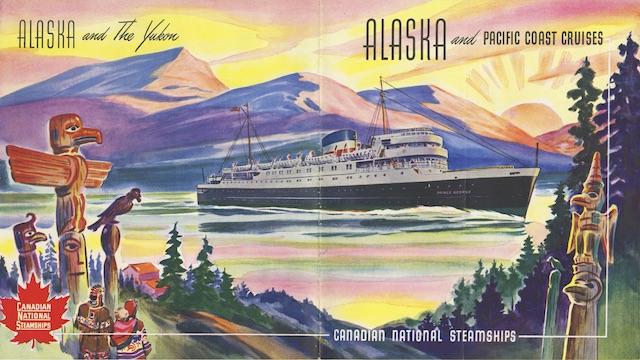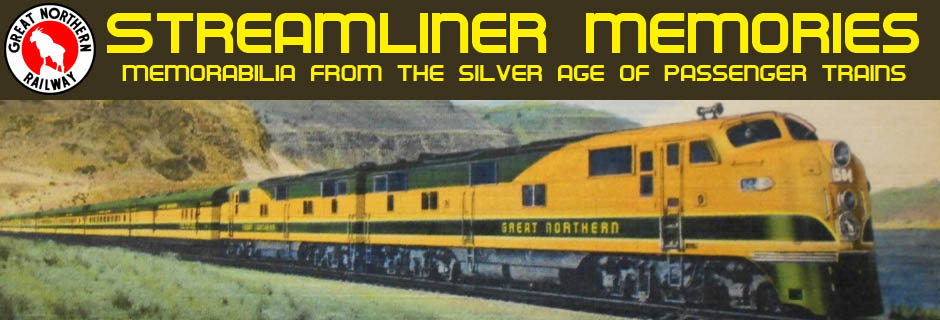Maybe I’m just a sucker for illustrations with sun-drenched colors, but I find this to be one of the more beautiful booklets used in railroad advertising (albeit one that is advertising a steamship). It is almost on a par with Rock Island’s Garden of Allah except CN marred this one by including some actual black-and-white photos.

Click image to download an 7.7-MB PDF of this menu.
While the booklet is designed to be folded to a Canadian standard 8-1/4″x9-1/4″ size, it unfolds so that each page is actually 16-1/2″ wide. Unfortunately, they didn’t take advantage of this except on the front cover; other color illustrations are 8-1/4″x9-1/4″ or smaller.
Before the Great Depression, CN actually had five “prince” ships in British Columbia or Alaska service, named David, George, Henry, Robert, and Rupert. The Depression reduced this to two, George and Rupert, and the George was destroyed in a 1945 fire in Ketchikan. CN commissioned a single replacement ship for post-war service and took delivery of the Prince George (II) in 1947.
Although this booklet is titled “Alaska and the Yukon,” it is really a celebration of CN’s new ship. Page 2 shows the ship steaming up the Inside Passage; page 3 shows several color illustrations of the ship’s interior; and page 6 had the ship deck plans and summer schedule. Deck plans for the older Prince Rupert, which managed to survive the war, are on page 7. Another beautiful color illustration of the George is on page 8.
For some reason, the booklet quotes round-trip fares for the George but only one-way fares for the Rupert (multiply prices by 8 to get today’s U.S. dollars). The Rupert also only went as far as Ketchikan instead of Skagway, which is strange because it means it didn’t serve Juneau, Alaska’s capital. The Rupert required 60 hours between Vancouver and Ketchikan, while the George needed only 44 hours to Ketchikan but 84 to Skagway. Both were capable of going 18 knots, so the Rupert‘s extra time was probably due to more stops en route.
